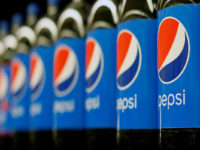
Making a “full-circle product” that gives back to the Earth is the thinking behind Australian bandage company Patch.
“If I was going to create an FMCG product where I couldn’t control the end user, I was going to do everything I could to at least ensure that it would naturally decompose and return back to the Earth. Creating a full-circle product is a beautiful thing,” James Dutton, Patch Strips owner, told Inside FMCG.
What started as finding a solution for his kids’ bruises has embarked on a journey to build a company that goes beyond medical attention. Bamboo has been used a lot for toothbrushes but not for wound coverings; Dutton explains how he discovered this sustainable bandaging solution.

Inside FMCG: Tell us how you started Patch Strips.
James Dutton: Patch was born from a desire to find a solution for people who have adverse skin reactions to traditional wound care. My son was part of a large and growing group of people worldwide that couldn’t wear off-the-shelf wound coverings. Through extensive research, I was shocked to find that chemicals and synthetics are used in creating wound care dressings. I knew I could figure out a way to eliminate those two harmful elements that have plagued the FMCG space for too many years. In addition, the gross waste of the industry inspired my mission to create a solution that is sustainable, 100 per cent compostable and would leave minimal impact on the environment.
Inside FMCG: It’s quite a unique product using bamboo for adhesive bandages. Is it more expensive to create this type of product?
Yes. Although bamboo has become a very popular choice for the eco-centric manufacturers, no one had ever thought to make wound care products from it – Patch Strips are a world first! We use certified organic bamboo, which is definitely a pricier material than what is commonly available on the market, but we know it is worth it for both people and our planet.
Inside FMCG: Where do you source the bamboo?
Straight from its homeland, China, where some of the best bamboo grows. Manufacturing close to the source also reduces our carbon footprint.
Inside FMCG: How are Patch Strips different?
Patch Strips are different because we have removed all known skin irritants from the Patch DNA and replaced them with gentle ingredients and materials. This also allows the wound to breathe easy – another great benefit of using bamboo!
Inside FMCG: What are the benefits of using charcoal, aloe vera and coconut oil for wounds?
Although first and foremost I wanted to fix the problem of waste in the wound care industry, I also wanted to solve the issue of adhesive irritation. I am a father of two young boys and my eldest son would run for the hills every time I got the antiseptic cream out when dressing his wounds. This was my motivation for enriching the gauze with charcoal, aloe vera and coconut oil. It’s a little extra help for parents in the often chaotic moments when trying to soothe a little one’s wounds.
Inside FMCG: How did you partner with Woolworths and Amazon?
A lot of hard work has gone into establishing key retailers on a global scale, including Woolworths and Amazon. It has taken a lot of perseverance to make margins and marketing budgets align but we are truly proud of these milestones and grateful that these key retailers are adjusting their buying strategy to make way for conscious brands like ours. Obviously, the numbers have to stack up, but their support goes a long way when smaller brands launch their products to the masses.
Inside FMCG: How do Patch Strips help protect the environment?
Patch’s positive environmental impact gives it an edge over its competitors, as it reduces problematic waste on the planet. Research shows, if every household in Australia purchased one packet of regular plastic plasters, it would equate to 70,812.5 square metres of plastic waste – that’s enough to cover the MCG surface three and a half times in plastic!
We have successfully engineered Patch to be 100 per cent plastic free, no bio-plastics are used and all materials are compostable and natural, so they start to decompose in the elements within weeks. Choosing to make our products with sustainable ingredients, being cruelty-free and free from synthetics will help to combat the billions of plastic strips that currently pollute our environment.
Inside FMCG: How do you see the sustainable movement in the FMCG industry five years from now?
Growing from strength-to-strength with more innovations, better accessibility to sustainable resources and hopefully, with economies of scale improving pricing to be just as competitive as current mass industry leaders’ products. I believe we will see companies adapt quickly to consumer’s conscious buying behaviours by creating new eco-innovations that seek to provide natural and sustainable solutions across the landscape. We’re on the brink of sustainability being embraced by the mainstream, and there’s never been a better time to be a profit-with-purpose business.
















